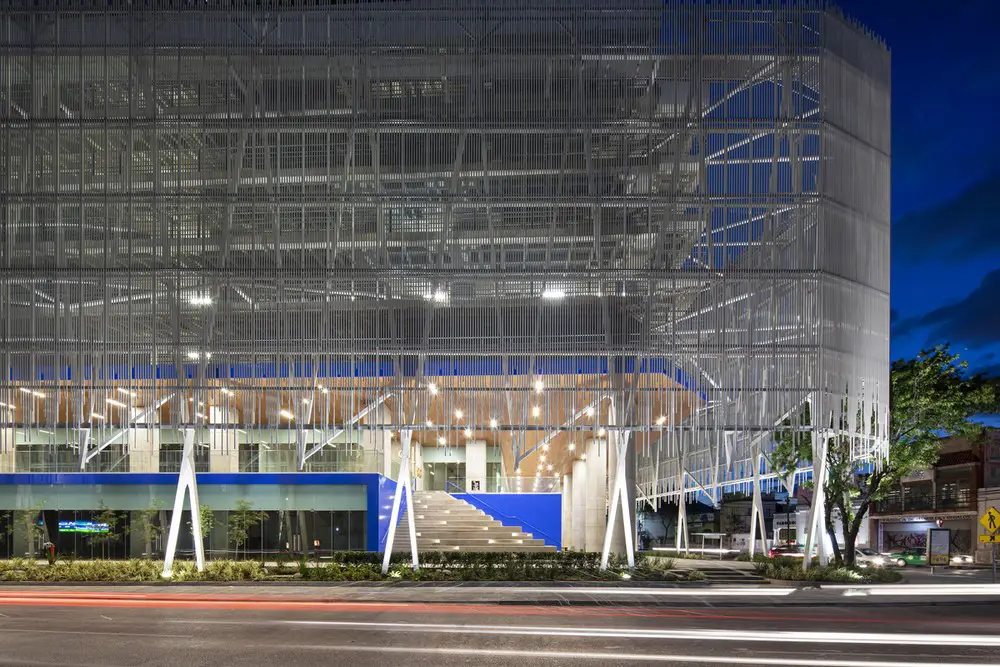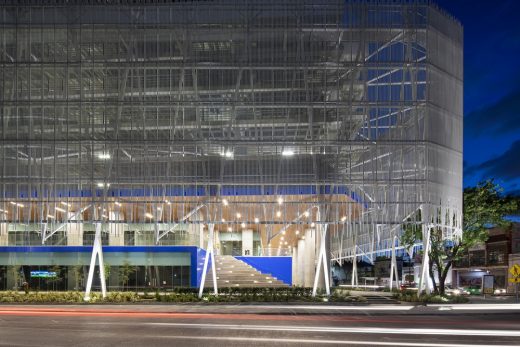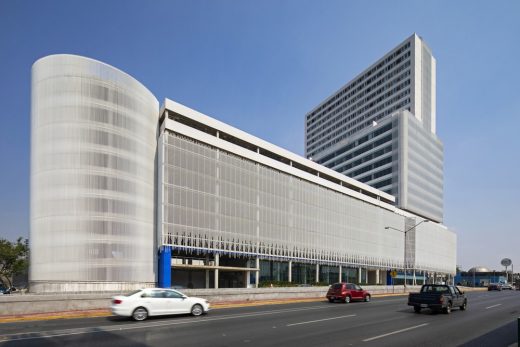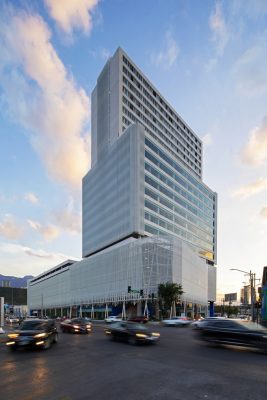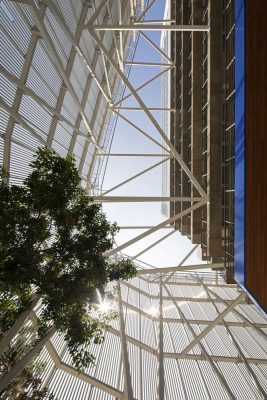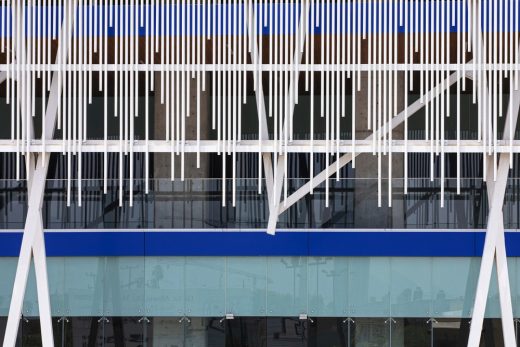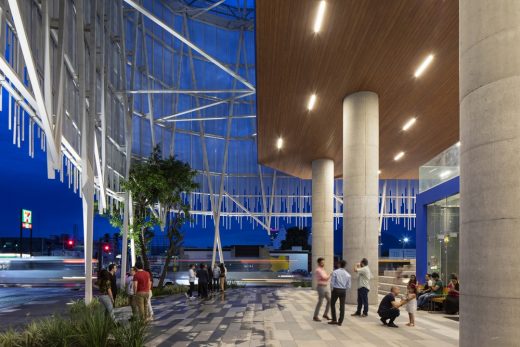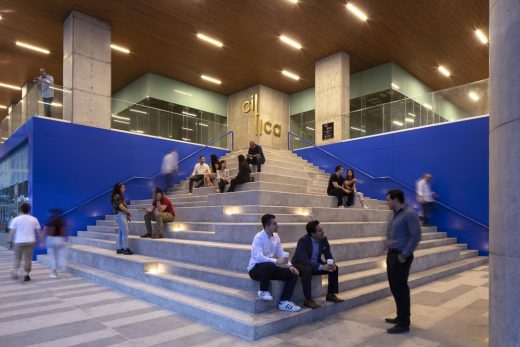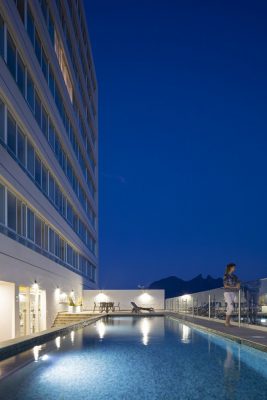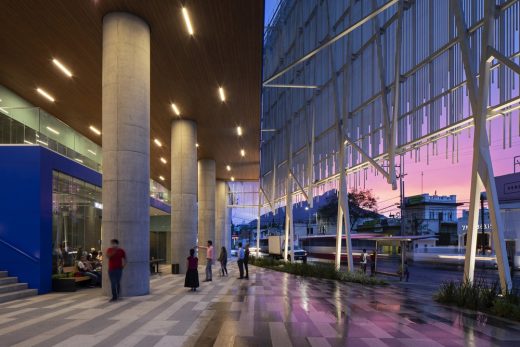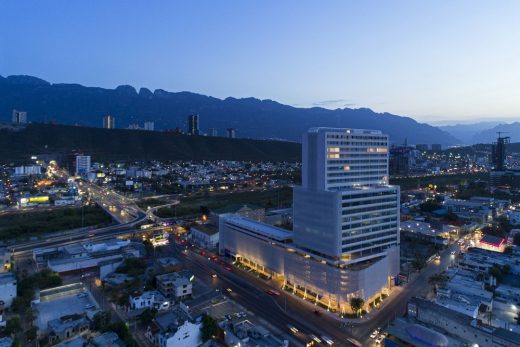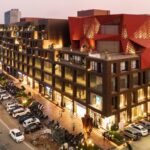Citica Mixed-Use Development, Monterrey Parking Garage, Retail and Leisure Building Images
Citica Mixed-Use Building in Monterrey
Contemporary Building Development in Mexico architecture design by Miró Rivera Architects
Jan 7, 2020
Design: Miró Rivera Architects (MRA) and Ibarra Aragón Arquitectura
Location: Monterrey, México
Photos by Adrián Llaguno and Miró Rivera Architects
Citica Monterrey Building
Citica is a 25-story mixed-use development that has transformed an abandoned lot into a vibrant center for living and working in the heart of Monterrey, Mexico. Since its heyday in the 1950s, the city of Monterrey has seen tremendous degradation in El Centro, its central core, which has lost population as rapidly as the suburbs around it have grown. By combining retail and commercial space with moderately-priced apartments, Citica represents a significant advancement on the path to urban renewal and increased density.
Designed in association with Ibarra Aragón Arquitectura, Citica is situated on Avenida Venustiano Carranza, a major thoroughfare connecting the city of Monterrey and the nearby municipality of San Pedro Garza García. Located two miles from the city center, the 301-foot-tall development is intended to serve as a catalyst for a municipal plan to provide pedestrian improvements to major transit corridors radiating from downtown Monterrey.
In line with the project’s larger purpose, the architects’ first priority was the creation of a pedestrian-friendly experience that would enhance the level of activity at the street. Situated on a polygonal corner site with an elongated street frontage, the bottom two floors of the development contain shops and restaurants that spill out onto a landscaped public pedestrian promenade shaded by a screen composed of aluminum tubes cut at random lengths and supported by interlaced vertical supports.
Wrapping a six-level parking garage (750 spaces) above the commercial base, the tube screen is a unifying architectural element that screens the garage and shades the retail spaces while allowing in natural light. The screen is made up of 2” diameter hollow aluminum pipes supported by a lattice of steel tubes and columns. Rather than treating the trellis as purely decorative, the architects viewed the element as an opportunity to accentuate the connection between the building and the street. Over 300 linear feet of the trellis were peeled away from the superstructure of the parking garage, resulting in a shaded public plaza that occupies the most prominent corner of the development.
The 32,000-square-foot retail component encompasses 17 storefronts including restaurants, cafes, shops, and a gym. Distinguished by blue metal panel cladding and floor-to-ceiling butt-glazed windows, the retail base was designed to foster active, dynamic street edges—making life and activity within visible from the street, and vice versa. Recalling the monumental steps of ancient Central American pyramids, a concrete staircase forms an open and inviting transition from this plaza to the shops and offices above. With integral lighting and a variety of depths and heights, the stair provides an opportunity for social interaction, inviting visitors to become spectators to the bustle activity at this busy intersection.
Rising above the commercial base, two distinct rectangular volumes contain eight levels of office space (164,000 sf) and nine floors of residential apartments (90 units), with amenities that include a rooftop terrace and swimming pool. A major challenge for the architectural team was creating a cohesive design solution that would integrate the tower’s discrete functions: retail, office, and residential. To address this challenge, vertical trellises on the east and west façades provide a unifying visual component that emphasizes the verticality of the tower; in addition, they serve as solar screens that block undesirable exposures.
Access to natural light and views was an essential factor in the design of the tower’s upper levels. The offices are characterized by fixed ribbons of glass, while the apartments feature operable windows. Facing north and south, the apartments and workspaces feature horizontal ribbon windows that provide sweeping views of the city to the north and the peaks of the Sierra Madre Oriental to the south.
Citica Mixed-Use Building, Monterrey – Building Information
Architect: Miró Rivera Architects and Ibarra Aragón Arquitectura
Project size: 329742 ft2
Site size: 62516 ft2
Completion date: 2019
Building levels: 25
Photography: Adrián Llaguno and Miró Rivera Architects
Casa Ithualli, Monterrey images / information received 070120 from Miró Rivera Architects
Location: Monterrey, México, North America
Mexican Architecture
Contemporary Mexican Buildings
Mexican Architectural Designs – chronological list
Konare food court, Catehua, City of Monterrey
Design: Tresismo
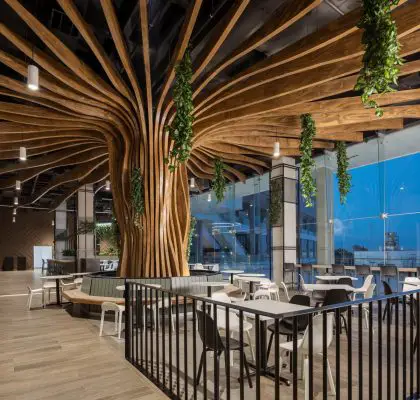
photo : Idea Cúbica
Konare food court, Catehua, Monterrey
Vineyard El Pedregal, San Miguel de Allende, Mexico
Architect: ASP Arquitectura Sergio Portillo
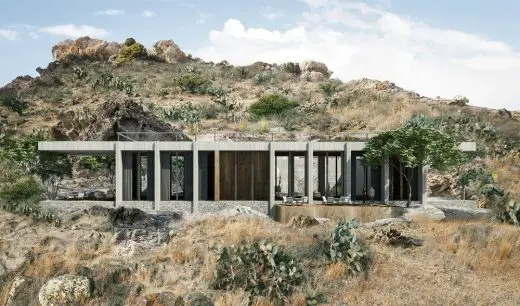
image courtesy of architects office
Vineyard and Hotel El Pedregal in San Miguel de Allende
Casa Cozumel in Quintana Roo
Design: Belzberg Architects
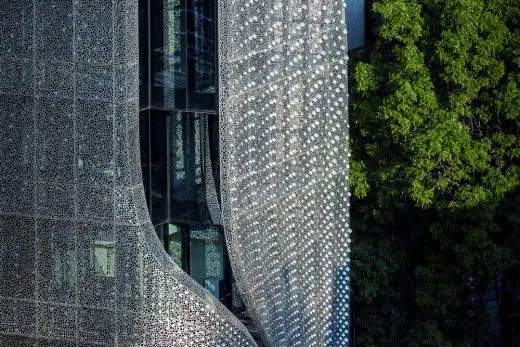
photograph : LGM Studio
Profiles House
Comments / photos for the Citica Mixed-Use Building Development in Monterrey, México design by Miró Rivera Architects page welcome

